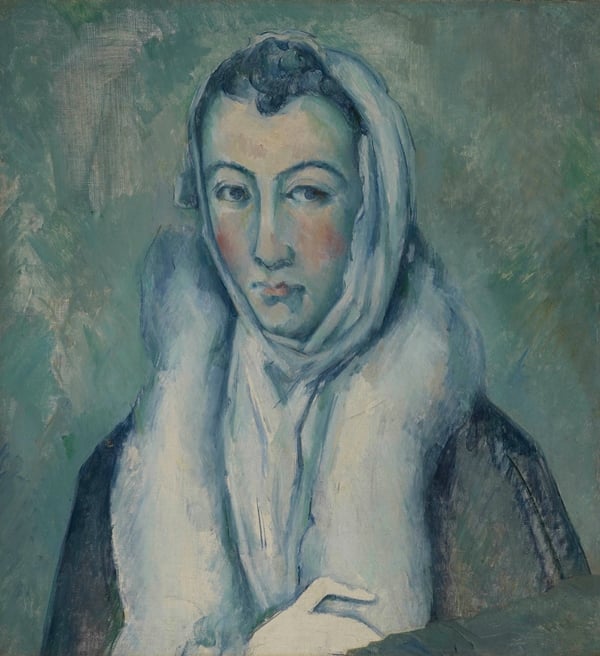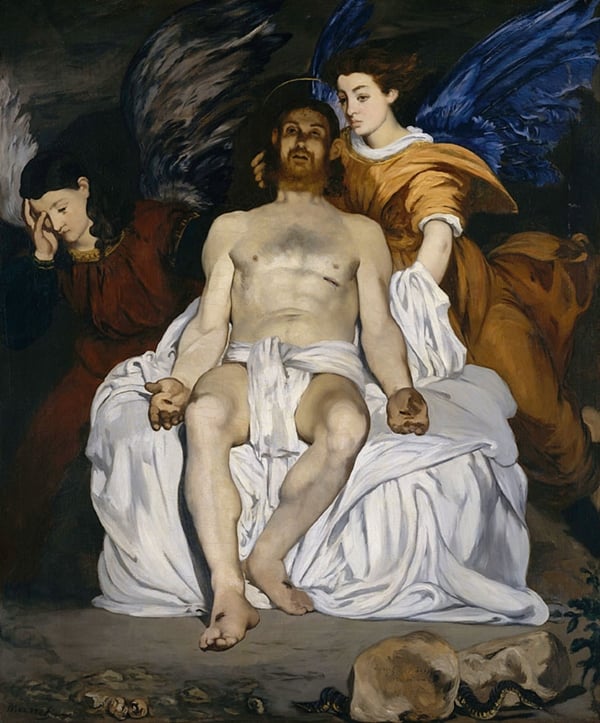Reviews
The Shock of the Old in the Prado’s ‘El Greco and Modern Painting’
The Master of Toledo casts a long shadow.
The Master of Toledo casts a long shadow.
Christian Viveros-Fauné

The Prado, Robert Hughes once wrote, is “the greatest museum of pure painting in the world.” At no time has that been truer than since June of this year, when the celebrated institution—along with several other Spanish and international museums—has seen fit to commemorate the 400th anniversary of the death in 1614 of Doménikos Theotokópoulos, El Greco. It’s most recent blockbuster, “El Greco and Modern Painting,” besides temporarily adding to its riches, also underscores a stunningly obvious truth. The forerunner of so much anguished modernity wasn’t modern at all—he was timeless.
The story of El Greco, like that of the Bible, comes in two parts. The first follows the Cretan-born artist from his native hometown of Candia, then a colony of the Venetian empire, to Venice and Rome, and subsequently to the cultural backwaters of Madrid and Toledo, where Theotokópoulos became a distinctive interpreter of Catholic imagery in a breathlessly languorous manner derived from Titian and Tintoretto. The second part of the El Greco tale—the one the Prado lovingly reconstructs in this exacting exhibition—involves the painter’s posthumous rescue from obscurity some two centuries later. Like his contemporary Caravaggio, El Greco was a canonical outlier, and thus something of a pest. Even in his own time, the artist made a mockery of standard-issue art history.
Tellingly, the revival of El Greco’s reputation began with key modernists like Manet and Cezanne; along with writers like Théophile Gautier and Charles Baudelaire, they were moved to enthusiasm, and then work, by the inclusion of nine paintings by El Greco in King Louis Philippe’s new Spanish Gallery at the Louvre. Picasso and Modigliani, among others, followed suit, further establishing The Master of Toledo’s influential bona fides among the 20th century’s top artists. The once overlooked painter’s sinuous stylizations and garish colors affected modern movements like Cubism, Orphism, Surrealism and Expressionism—as seen in the work of continental figures like Delaunay, Grosz, Kokoschka, Beckmann, Giacometti, and Francis Bacon. Eventually, his creepy strangeness jumped the pond, making itself felt among militant Mexican Muralists and New York’s AbExers. To judge from the copies Jackson Pollock made of the corkscrewing, muscular figures populating his Resurrection of the Christ, El Greco rightly deserves praise as the modern-day grandpappy of most painter’s painters.
All of these artists, and many others, are included in “El Greco and Modern Painting,” a depth charge of a show that articulates the sort of global cross-historical arguments one whishes great museums would make more often (the Met, for one, has promised to regularly “present and interpret both contemporary and historical art in a global context,” once the handoff of the Marcel Breuer building is complete). An agile yet authoritative exhibition that traces the influence of El Greco through various painterly face-offs between the old master and his historical acolytes, the Prado’s landmark show sheds light not just on the artist’s influence, but on the enduring shock of encountering El Greco’s ecstatic pictures. Four hundred years after his death—and less than a hundred after the purchase of the artist’s Agony in the Garden by England’s National Gallery begat a full-fledged scandal—El Greco’s paintings still rattle, shake and, ultimately, rock polite museum-going expectations.

Paul Cezanne, Lady in a Fur Wrap, after El Greco (1885–82)
Photo: London, Private Collection
Masterfully curated by Javier Barón, the Prado’s Chief Curator of 19th Century Painting, the exhibition’s 80 loaned contemporary works span a period of 110 years, from 1860 to 1970. Among these is Manet’s Dead Christ with Angels—in case anyone is worried about the painting having temporarily gone missing from the Met’s 3rd floor—which Barón presents next to a typically apocalyptic El Greco Annunciation, normally housed among other treasures in Budapest’s Szépmüvészeti Museum. Another is the intimate connection that the exhibition facilitates between Cezanne’s Lady In a Fur Wrap, After El Greco and the old master’s original, usually found at Glasgow’s Pollok House. Anyone who considers El Greco merely an evangelist of high-pitched painting should experience this head-turning gem. A gorgeous head-and-shoulders portrait of a dark-eyed, pink-cheeked fox enveloped in rich chinchilla, it reaches beyond simple naturalism—and our own difficulty in seeing beyond photographic likeness—to establish beauty as an ideal. Think Jennifer Lawrence as the belle dame sans merci.
Like so many before and not a few after him, Cezanne found El Greco’s portrait “fort beaux,” but his religious paintings “bizarre,” which they are—in hot-hued spades. Take, for instance, the El Greco’s The Vision of Saint John, which the Prado situates near Pollock’s contorted 1944 composition Gothic. A compressed, eschatological picture full of twisting, torqued figures and furious chiaroscuro that looks like sheet-lightning, it’s intensity is made still more jarring by the presence of panes of bright red, green, yellow, and blue color. No wonder the picture caused Picasso to sweat when he saw it at his friend Ignacio Zuloaga’s studio in Paris—his Demoiselles d’Avignon owes no small debt to El Greco’s purposefully tormented, unstable forms.

Eduouard Manet, The Dead Christ with Angels (1929)
Photo: New York, The Metropolitan Museum of Art. H. O. Havemeyer Collection, Bequest of Mrs. H. O.
Havemeyer, 1929
Manet’s Dead Christ with Angels and other painting lessons in “El Greco and Modern Painting” carry a long charge. Yet only the old master’s rapturous canvases, like The Vision of Saint John, make this exhibition bristle and pop with 400-year-old electricity.
N.B.: A Vision of Saint John and other Gotham-based El Greco treasures will be featured in “El Greco in New York,” a special collaboration between the Met, the Frick and the Hispanic Society, due to open at the first two museums on November 4.